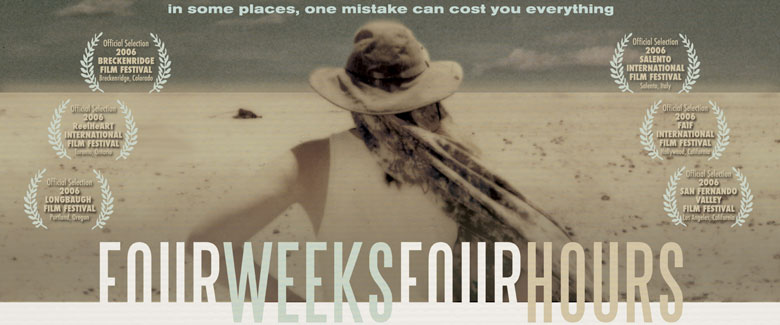The Making of Four Weeks, Four Hours
A Two-Production Approach
Four Weeks, Four Hours was shot in pieces over a three year period. Originally conceived as two interwoven stories, the shoot was completed in two parts, with each story handled as an individual shoot.
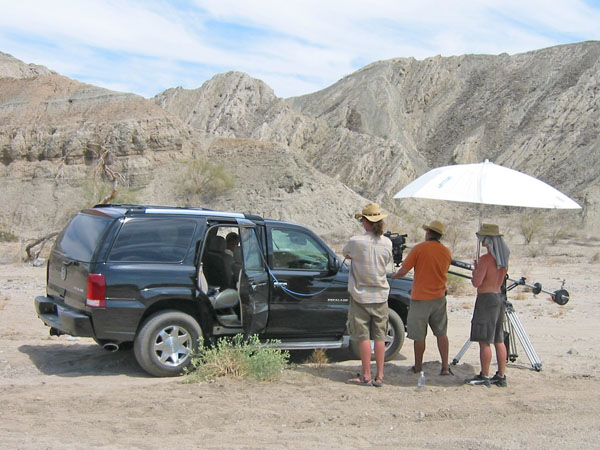
The cast and crew on location in Box Canyon, California
Because of the tiny budget, crews were pared down to a bare minimum in order to keep the production nimble (for example, scenes for the Photographer's portion of the shoot was completed with an average cast and crew of five people). In fact, the audio postproduction credits are longer than the production credits!
On-location shooting using available light necessitated many early mornings and late evenings, in order to capture every minute of each sunrise and sunset. This also enabled the production to avoid shooting during the blistering heat of noon-time, at which point temperatures would regularly skyrocket to 110 degrees
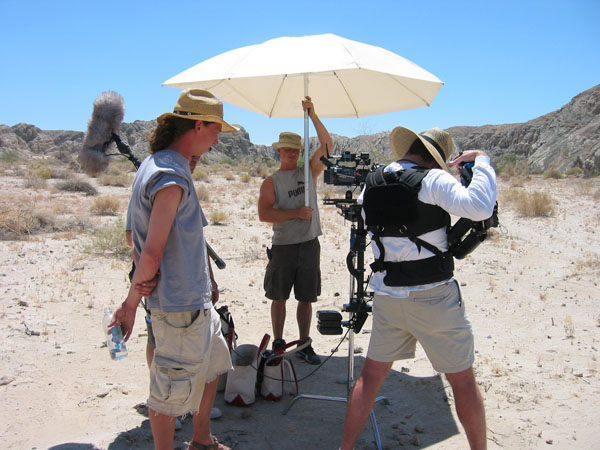
Steadicam operator Matt Chubet in Box Canyon
Postproduction was similarly pared down, although the long production schedule allowed for a great deal of experimentation with the documentary-style footage, and reedits followed the completion of each new batch of scenes. Fortunately for the budget, Alexis' background in editorial and effects allowed him to handle the visuals almost single-handedly.
Meanwhile, an excellent team of independent audio specialists, led by Supervising Sound Editor Derrick Espino and Dialog Supervisor Shaughnessy Hare, completed the audio mix, finally bringing the project to a close in July of 2004.
The Director—On Surviving the Survival Story
At times, the shoot was more of a survival story than the script. One day I was scouting a location in some dunes with the property owner, and his pickup truck got stuck. Basecamp was miles away at the center of the dry lakebed where we were shooting.
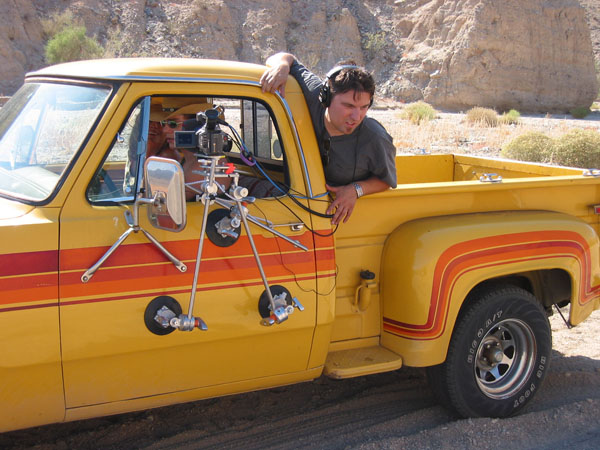
Director Alexis Van Hurkman—riding in the back of the bus
Wistfully gazing towards camp, where the crew was napping in the afternoon heat, I couldn't help but ponder the irony that each must-have survival item for the movie was uselessly sitting in the prop-bag. The owner and I had, in two hours, broken every rule I learned about surviving in the desert. Hooray for research.
This story has a happy ending—a friend of the owner's eventually arrived on an ATV carrying two shovels. Next time, I'm hiring a location scout.
Living-Room Postproduction
At nearly every stage, postproduction was accomplished by individual artists working at home. Editing with Apple's Final Cut Pro provided the flexibility to accommodate the three-year-long post process, allowing Four Weeks, Four Hours to be pieced together and readjusted as new footage became available with each successive shoot (don't try this at home—the unusually long editing schedule resulted in the project file spanning the four successive releases of Final Cut Pro 3, 4, 4.5, and 5, but each project update was handled like a champ).
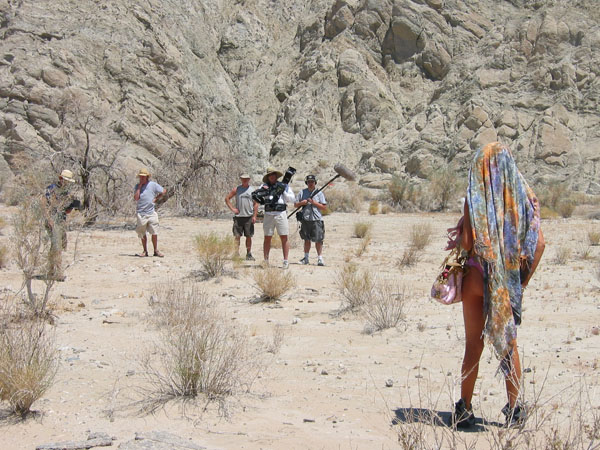
Judi Beecher and Crew in Box Canyon
Despite its verité style, over fifty effects shots were eventually created using Apple's Shake and Adobe Photoshop. Otherwise unusable shots were salvaged with digital paint, set extensions added unaffordable props and production elements, and many other shots were tweaked with small enhancements and corrections, as needed. While most of the effects shots were simple 2D composites, two additional airplane 3D elements were created by artist Steve Dyson using NewTek's Lightwave.

Director Alexis Van Hurkman with PA Jeff Sorensen
Audio postproduction was also done with home desktop systems. Derrick Espino, the Supervising Sound Editor, and Shaughnessy Hare, the Dialog Supervisor, were both able to work on their own systems using Digidesign's ProTools from cleanup through the final mix.
The final visual elements were brought back into Final Cut Pro for comprehensive color correction, and then the entire project was deinterlaced and remastered to HD resolution using the new optical flow technology in Shake 4.
